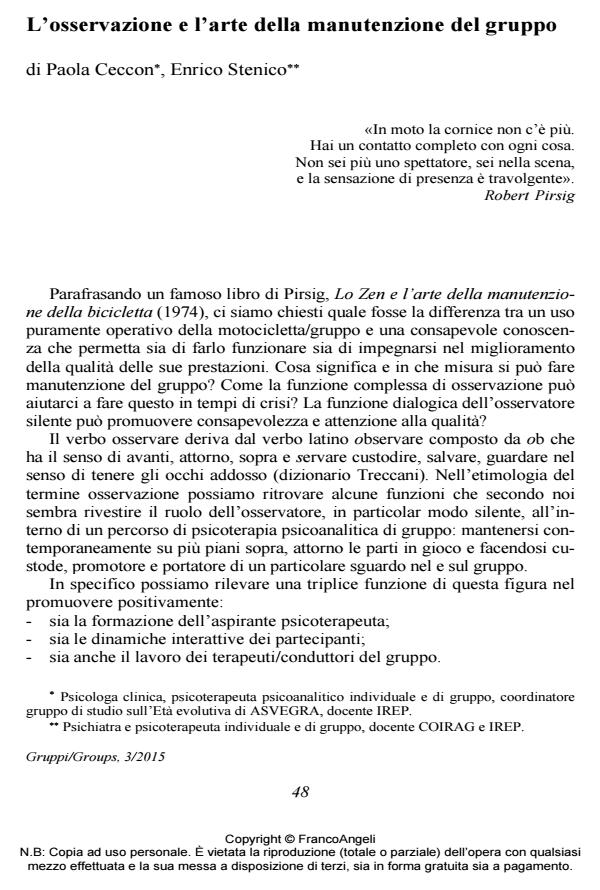Observation and the art of group maintenance
Journal title GRUPPI. Nella clinica, nelle istituzioni, nella società
Author/s Paola Ceccon, Enrico Stenico
Publishing Year 2017 Issue 2015/3
Language Italian Pages 10 P. 48-57 File size 160 KB
DOI 10.3280/GRU2015-003005
DOI is like a bar code for intellectual property: to have more infomation
click here
Below, you can see the article first page
If you want to buy this article in PDF format, you can do it, following the instructions to buy download credits

FrancoAngeli is member of Publishers International Linking Association, Inc (PILA), a not-for-profit association which run the CrossRef service enabling links to and from online scholarly content.
To paraphrase Pirsig’s well-known book, we ask what the difference is between using a motorcycle/group in a purely operational manner and having a conscious knowledge that allows us to both make it work and to make it work more effectively. What does this mean, and how can maintenance be carried out on the group? Can the complex function of observation help us to do this during times of crisis? Is the observer’s dialogue function able to promote awareness and attention to quality? Through reflections and clinical vignettes about the role of the silent observer, it is possible to emphasize a threefold function: training, reading interactive dynamics and supporting therapeutic work. That the observer remains in the "suspended/restless" state is necessary both for the training of future psychotherapists, and also for the clinician and for those who wish to promote their own subjectivity not only as an individual but as an Authentic Person (Lopez).
Keywords: Group dynamics, training, observation, therapeutic work, individual dynamics.
- Riflessioni sull'esperienza di osservazione in due équipe multiprofessionali per la prevenzione, la cura e la riabilitazione delle dipendenze patologiche Linda Marconi, Barbara Battocchio, Vito Sava, in GRUPPI 1/2025 pp.185
DOI: 10.3280/gruoa1-2-2023oa21224
Paola Ceccon, Enrico Stenico, L’osservazione e l’arte della manutenzione del gruppo in "GRUPPI. Nella clinica, nelle istituzioni, nella società" 3/2015, pp 48-57, DOI: 10.3280/GRU2015-003005